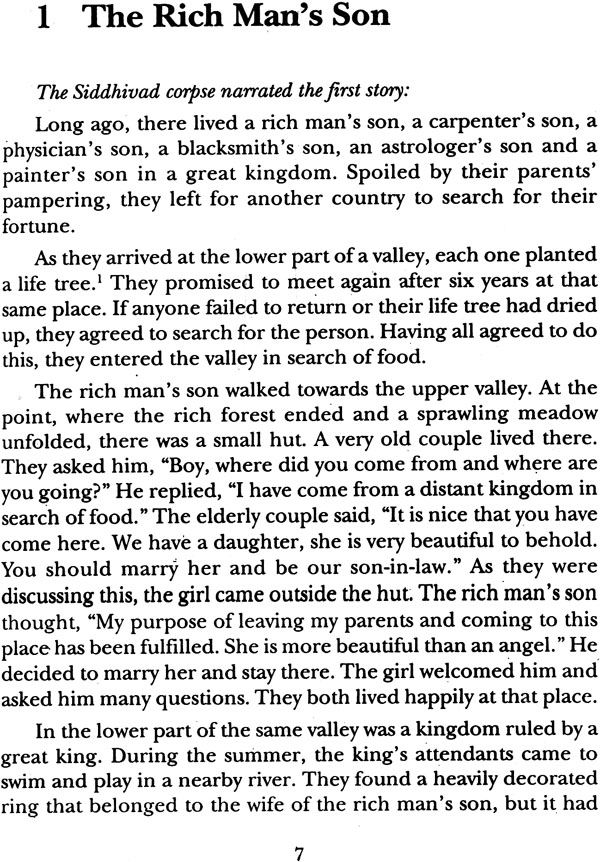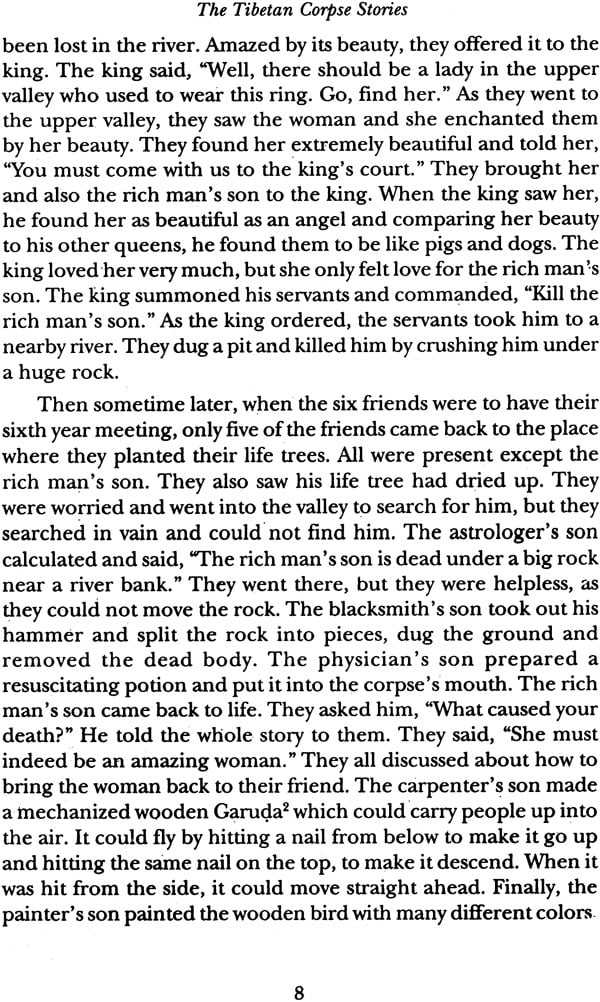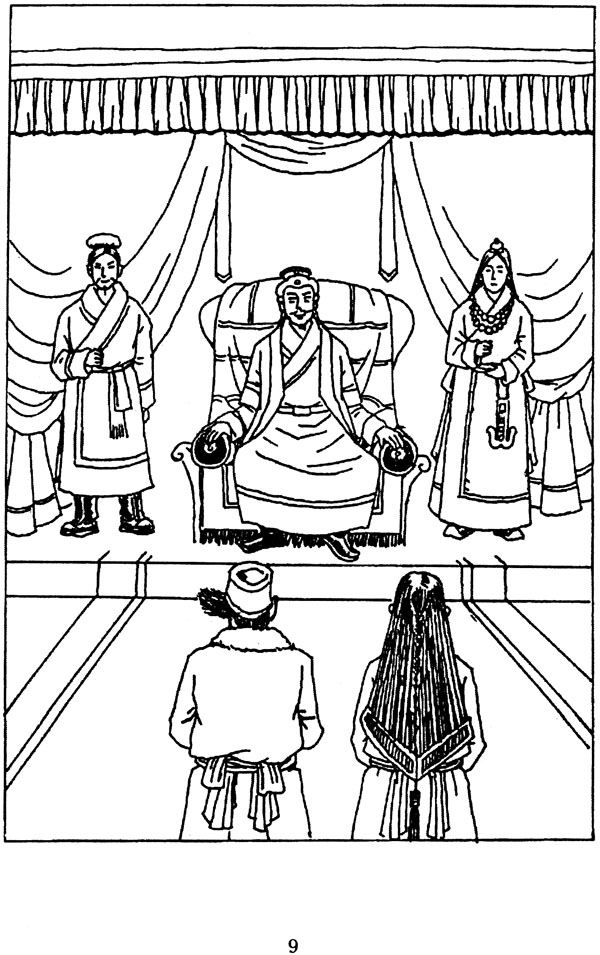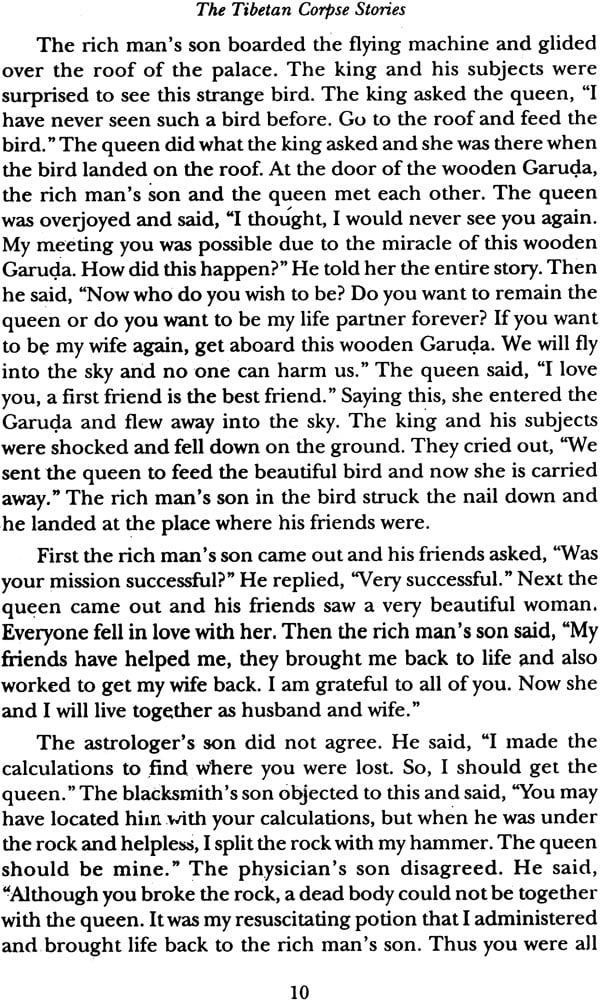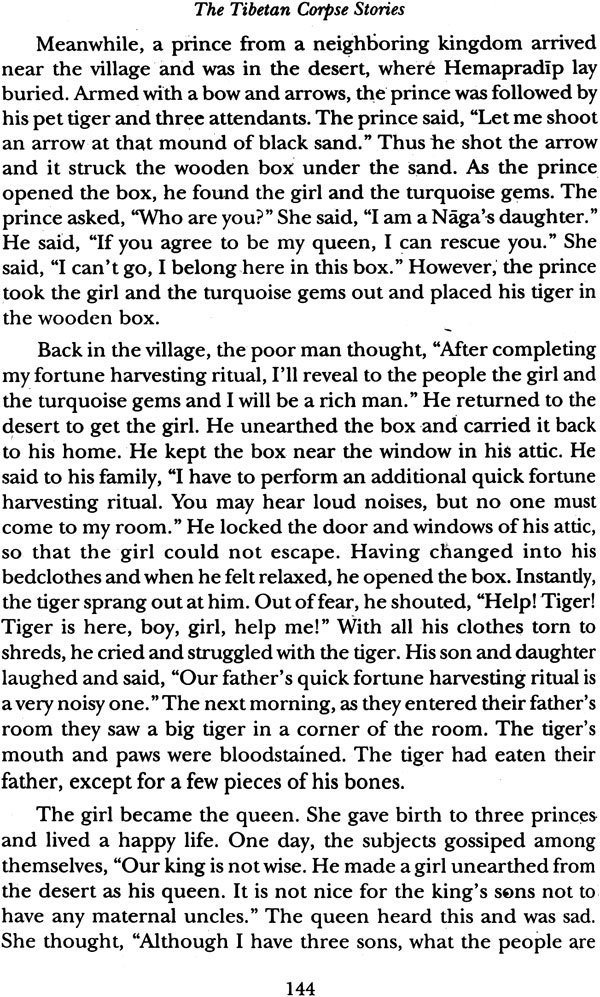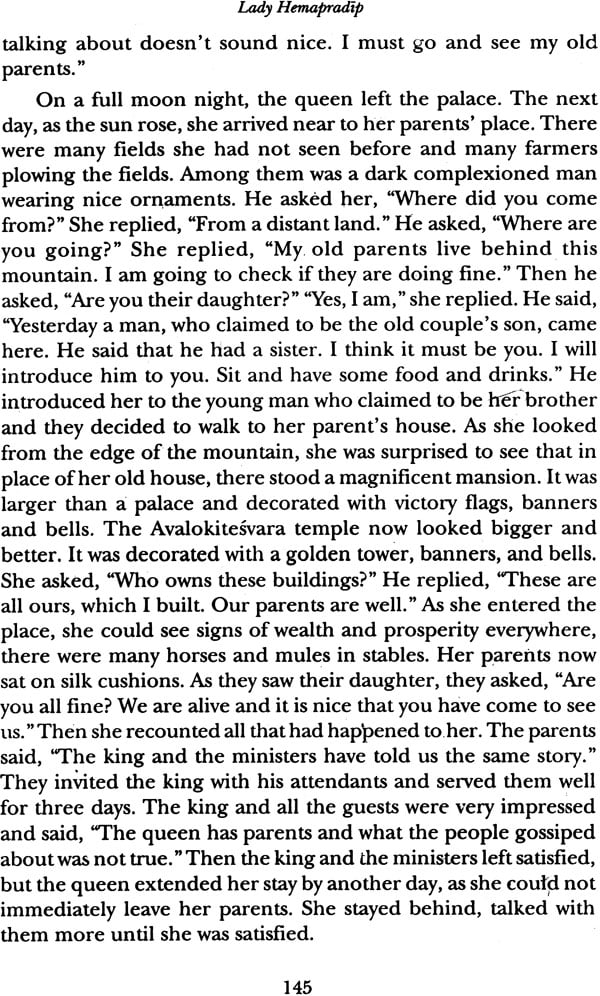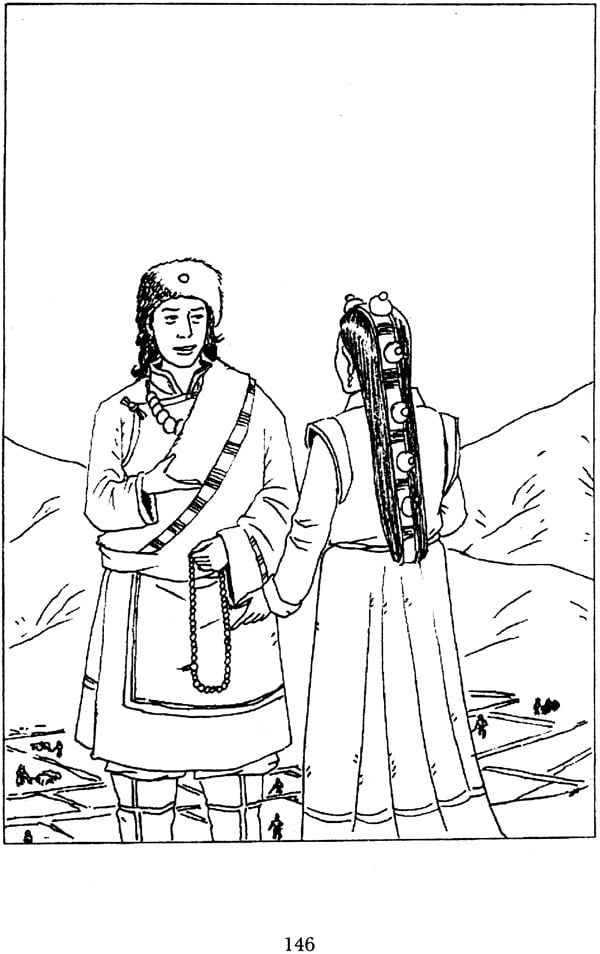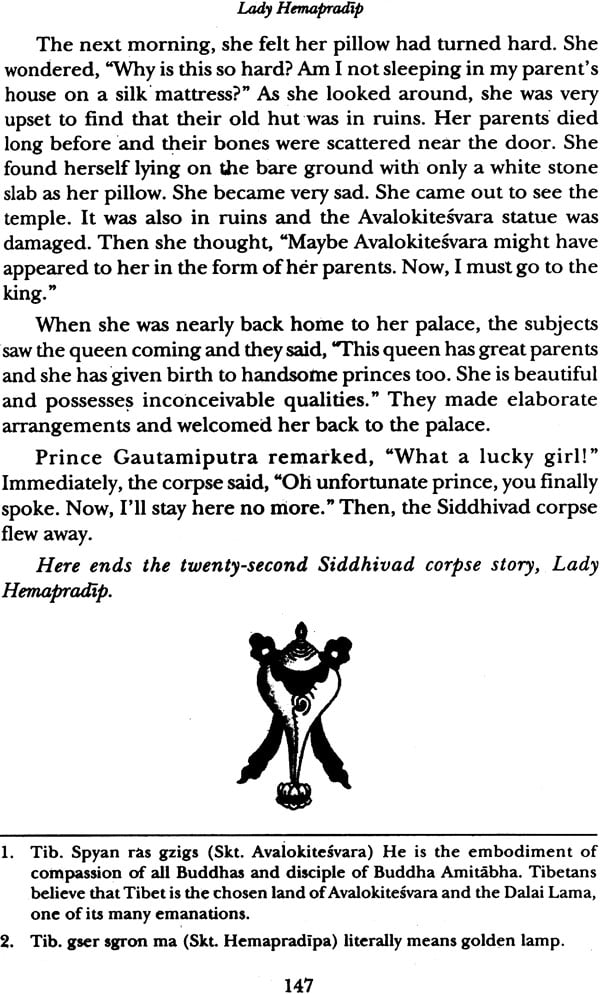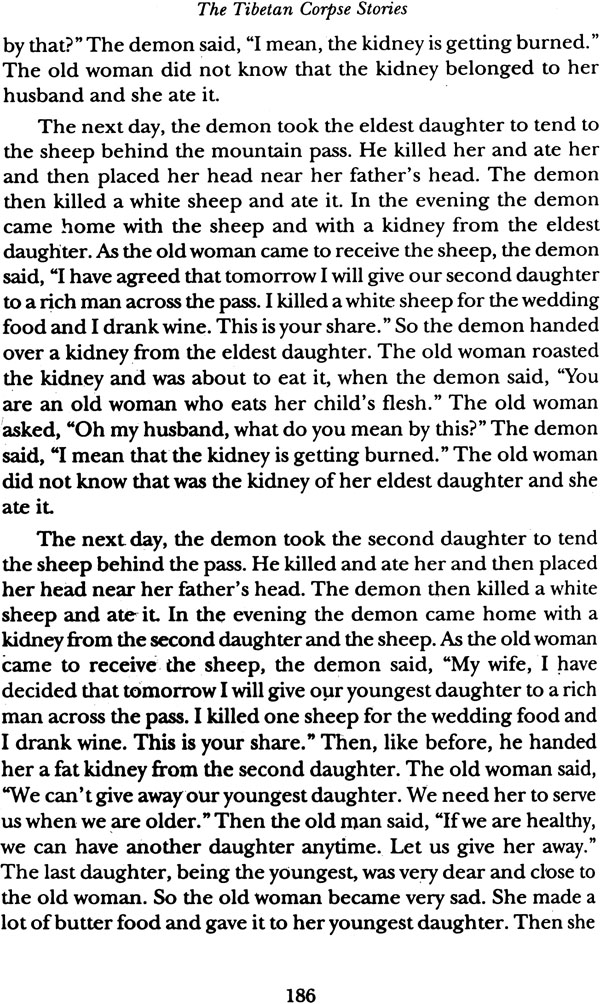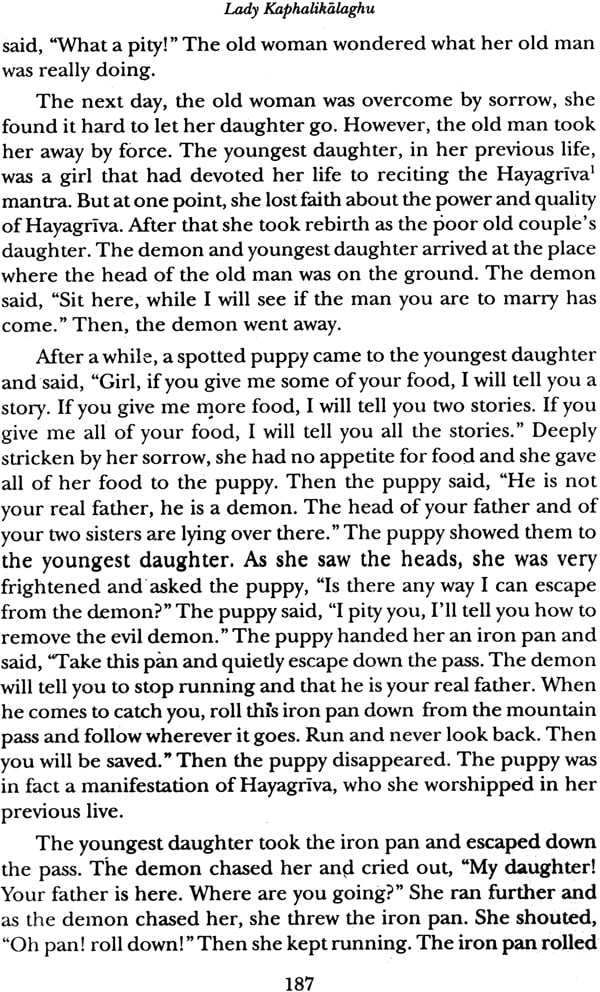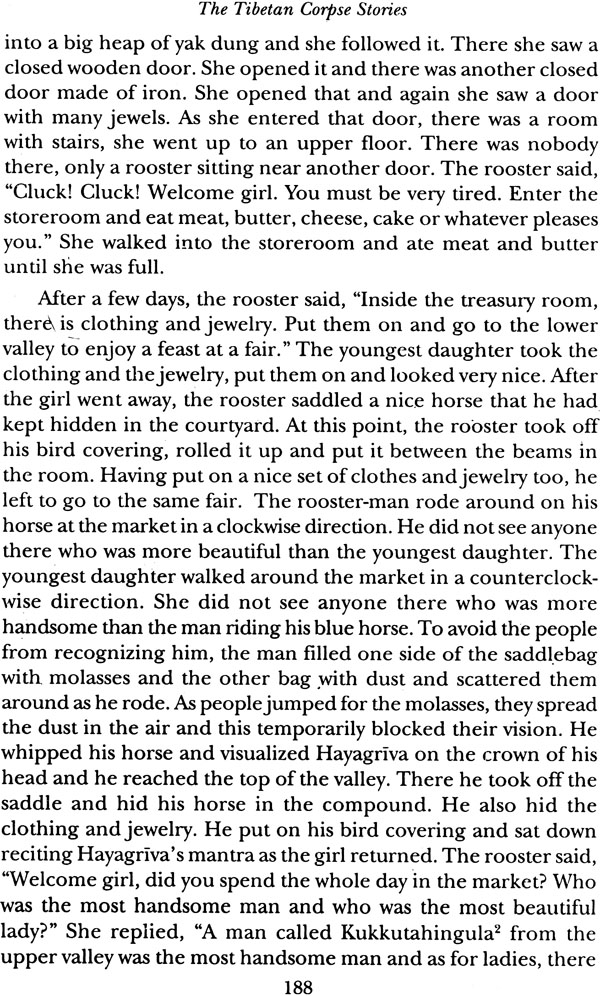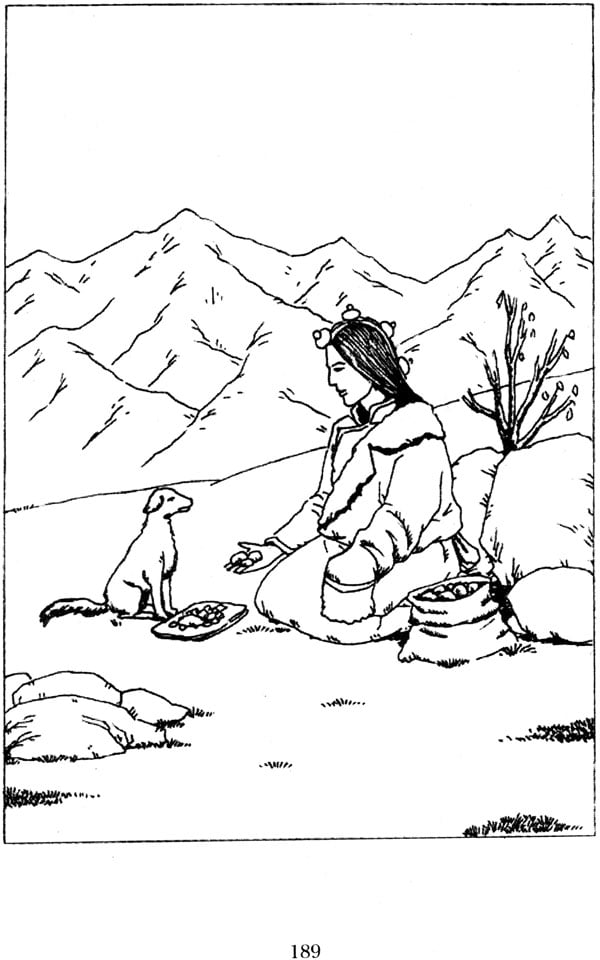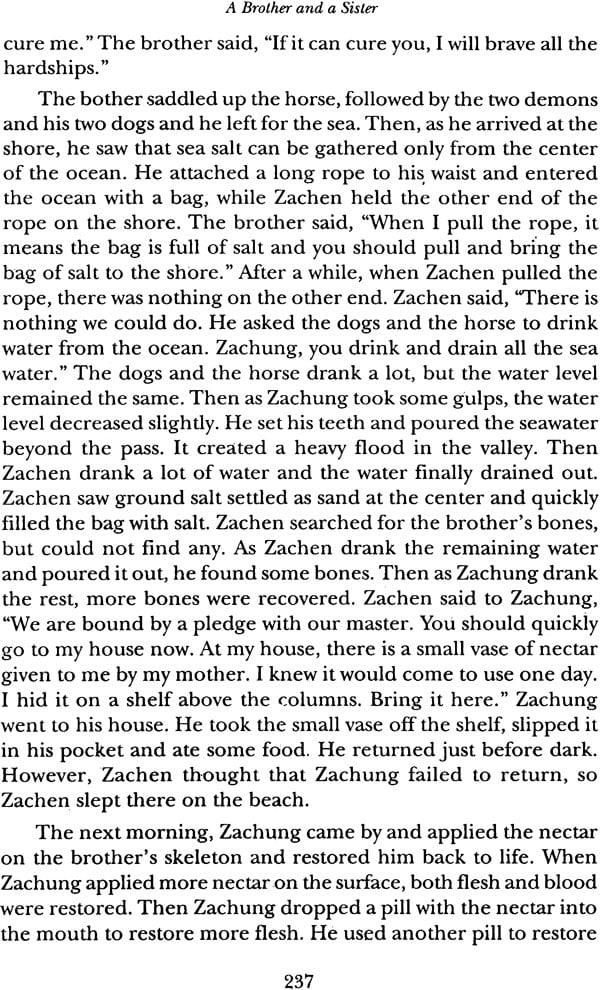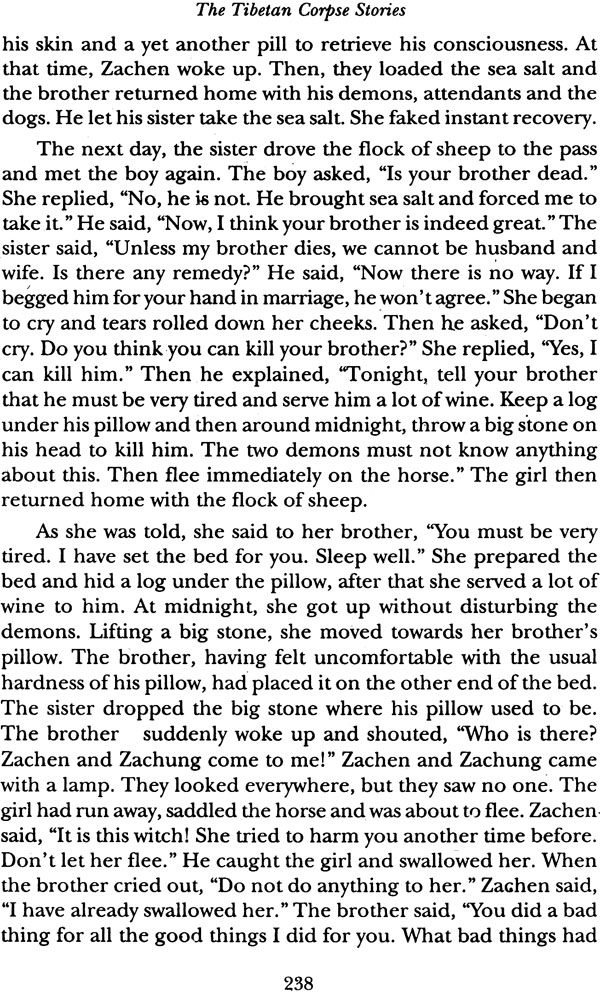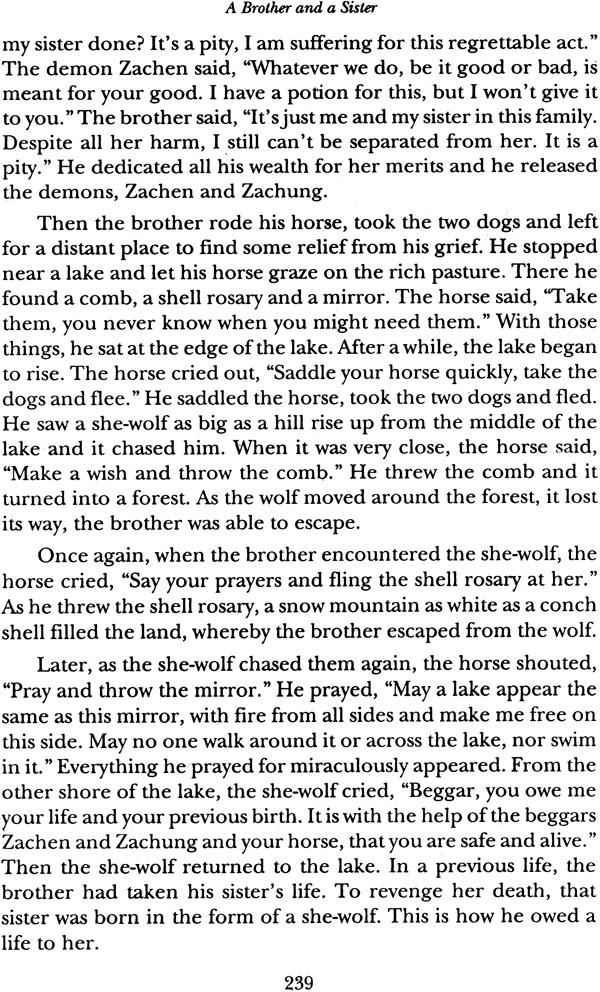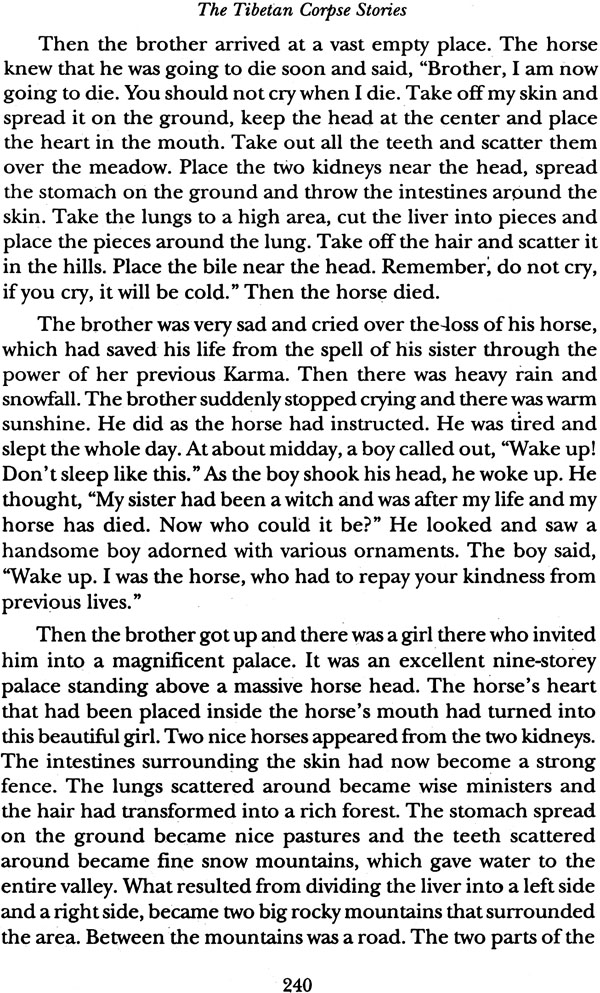
The Tibetan Corpse Stories (By Acarya Nagarjuna and King Gautamiputra)
Book Specification
| Item Code: | NAH515 |
| Author: | Ryoshun Kajihma |
| Publisher: | Motilal Banarsidass Publishers Pvt. Ltd. |
| Language: | English |
| Edition: | 2014 |
| ISBN: | 9788120836310 |
| Pages: | 264 |
| Cover: | Paperback |
| Other Details | 8.5 inch x 5.5 inch |
| Weight | 320 gm |
Book Description
Most of the early Tibetan literature was derived from ancient Indian Buddhist literature. However, one popular non- Buddhist literature that came from India was Vetala (Vetalapancavimsatika) or corpse stories. In Tibet it is called, Ro sgrun (pronounced Ro Dun) also called, Siddhivad corpse stories, it means stories told by a dead body. Tibetans memorized the corpse stories and transmitted them orally to all parts of Tibet. During that time, the Indian Vetala (corpse stories) changed into Tibetan stories. They became one of the most important literature in Tibet. Many years later, after the stories had traveled to all of the areas in Tibet, hand-written manuscripts (U Med) were made of them. This is why there are a few different versions of the same stories, because people in different areas remembered them differently.
The author has translated into English one group called, "Fascinating Stories of the Golden Corpse" which was published in the Tibetan language in Kham, east Tibet. A Siddhivad corpse narrates 34 stories to Prince Gautamiputra. Nagarjuna (150-250 CE), who was the founder of the Madhyamika School of Buddhism, and King Gautamiputra, who was the last king of the Satvahana dynasty, collected these stories which are included in this book.
RYOSHUN KAJIHAMA, PhD, was a Professor at the Faculty of Foreign Studies at Setsunan University in Osaka, Japan. He specializes in Tibetan Buddhism and culture.
In the center of Asia and the southwest part of China lies the Tibetan plateau, which is about 4,500 meters above sea level. Given its high altitude, this area is popularly known as the Roof of the World. It is also the source of the major rivers of Asia, these are the Indus, the Salween, the Mekong, the Yangtze, and the Huang Ho River.
In the past, on the plateau there was a country called Tibet and it was divided into three provinces, V-Tsang in the west and Kham and Arndo in the east. The people who lived there were called Tibetan. They were introduced to Indian culture as early as the year 600 CE and Indian Buddhism played a major influence. These people established their own individual Tibetan Buddhism which later spread to Mongolia and to other Himalayan regions.
Most of the early Tibetan literature was derived from ancient Indian Buddhist literature. However, one popular non-Buddhist literature that came from India was Vetala (Vetalapancavimsatika) or corpse stories. In Tibet it is called, Ro sgrun (pronounced Ro Dun) also called, Siddhivad corpse stories, it means stories told by a dead body. It is not clear how or when the Indian Vetala (corpse stories) came to Tibet, it is presumed they came when Buddhism was introduced into Tibet. Tibetans memorized the corpse stories and transmitted them orally to all parts of Tibet. During that time, the Indian Vetala (corpse stories) changed into Tibetan stories. They became one of the most important literature in Tibet. Many years later, after the stories had traveled to all of the areas in Tibet, hand-written manuscripts (U Med) were made of them. This is why there are a few different versions of the same stories, because people in different areas remembered them differently.
This book I have translated into English was originally called Rgyal bas lung bstan klu sgrub dang rgyal po bde spyod bzang po gnyis kyis mdzad pa'i ngo mtshar rmad du byung ba mi ro gser sgrung. In English, it could be called, Fascinating Stories of the Golden Corpse by Acharya Nagarjuna and King Gautamiputra. There is no clear information regarding the date and place of its origin, however given the Khampa dialects are scattered throughout the book, we can presume that these stories were influenced by the people and customs of Kham in the eastern part of Tibet. I have.collected enough material about the Tibetan Siddhivad corpse stories over the years and I feel they are some of the oldest stories.
As a translator, I did not want to make any mistakes when translated the old original Tibetan text into English. Since it has many unused Buddhist related words, I had doubts about many of the old Tibetan words. I translated each sentence into English and then asked many Tibetan scholars living in India for help about the difficult terms.
Hundreds of years ago, when the Indian Vetala stories were first translated from Sanskrit into Tibetan, the names of people and places were changed into Tibetan names and places. I tried to use the original Indian Sanskrit names and places as best as I could. Whenever I encountered difficulty in tracing the original Sanskrit names and places, I used the Tibetan names phonetically.
I want to thank Mr. Tseten for his wonderful drawings in this book, they help reconstruct the wonder I get from these stories. I also want to thank Mr. Alan Neill for editing the stories. I am honored to have my book published by Motilal Banarsidass, one of the renowned publishers in India
Once upon a time, there lived seven magician brothers in a kingdom in central India. Not far away from them, probably about one Yojana away, there lived two young princes. One day, the elder prince went to the seven magician brothers' house to learn the secrets of magic. He trained for seven years, but did not learn any magic tricks because the magician brothers withheld their secrets and did not impart them to the elder prince.
One time, the younger prince arrived at the magicians' place to deliver some food to his elder brother. He looked through the door and saw the secrets of their magic, which he spontaneously understood. Instead of handing over the provisions to his brother, the younger prince called him to come out and they returned to their palace. The younger prince said to his elder brother, "Even if you were trained in magic for seven years, you can't be sure that you can know how to do it. In our own compound, there is a really wonderful horse. Take it, but do not let it go towards the seven magicians' house. Head in the opposite direction and sell the horse, buy things and bring them here." Having said this, the younger prince changed himself into a magic horse.
The elder prince thought that, although I learned magic for seven years, I could not be perfect in it. My younger brother perfected such a wonderful skill. What would happen if I rode the horse? As soon as he mounted the horse, a force of magic turned the horse and the horse traveled towards the seven magicians' house. When they arrived at the gate, there was no way the younger prince could escape. Thinking that the seven magician brothers might be interested in buying the horse, the elder prince said to them, "This is a wonderful horse found by my younger brother, would you like to buy it?" They knew it was a magic horse and they were afraid that the younger prince might know all about their magic secrets. So, they decided to buy and kill the horse. The magician brothers paid as much as the elder prince demanded for it. Then the seven magician brothers tied the horse to a fence.
Later, some brothers held the horse by the ears, while others held it by the legs and the tail so that it could not escape. They look the horse to a river, they wanted to give the horse water to make sure the horse bled heavily. The younger prince, who had changed into that horse, knew that his brother had made a mistake that put him in a lot of danger. He wondered which animal form he must change into. Just then, the horse saw a fish in the river and he changed himself into a fish. The seven brothers turned into seven swans and chased the fish. Finding it hard to escape, he changed into a pigeon and flew high in the sky. The seven brothers at once turned into seven hawks and chased him over mountains and into valleys. The pigeon fled into a cave called Samkara" in Sriparvata" Mountain in the southern Vaidarbha kingdom and sat in the lap of Acharya Nagarjuna.
The seven hawks approached near the cave and then they changed into seven dancers. Acharya Nagarjuna wondered why a pigeon was chased by seven hawks. He asked the pigeon, "Why are you so frightened?" The pigeon told everything that had happened and said, "They are at the entrance of this cave in the form of seven dancers, they will come to you and request that you give a bead from your rosary. I will hide in the form of the knot bead. So, please keep the knot bead in: your mouth and scatter the rest of the beads outside." Like he said, the seven dancer came in the cave and requested Acharya Nagarjuna, "Give us you rosary." Acharya Nagarjuna kept the knot bead in his mouth and scatter he scattered the rest of his beads outside the cave. The beads once turned into worms. The dancers turned into seven roosters and right away they all started to eat the worms. Acharya Nagarjuna took the knot bead out of his mouth and it immediately transformed back into the young prince. The prince took a stick' and-killed all the seven roosters and then they turned back into seven human dead bodies.
Acharya Nagarjuna was extremely displeased and said, "I saved your life, but it resulted in the death of seven men, which is not good." The younger prince said, "I am a prince, Acharya Nagarjuna has saved my life, but the seven brothers have died. To purify this sin and to repay your kindness, I am ready to obey whatever you ask me to do." Nagarjuna said, "In a cemetery called Sitavana," there is a corpse called Siddhivad," whose lower body is made of gold, and its upper body is made of turquoise. The hair on its head looks like a conch shell. Can you bring it to me? If you could, . all my wishes will be fulfilled. Also, this act shall give collective blessings to all the people of Jambudvipa? and they will live for a thousand years."
The younger prince agreed and said, "I'll do what you want, please tell me about the route, the method and the supplies I will need to do this." Acharya Nagarjuna said, 'The route is about one Yojana away, passing through a narrow, gloomy and eerie valley filled with huge corpses. When you approach, all the corpses will rise up. Bless the biggest corpse with the words 'Hala, Hala, Svaahaa' and sprinkle barley from this small bag." Next, after crossing one valley, there are many baby corpses. They should be blessed by saying 'Tira, Tira Phat' and throw some grains of barley from this small bag. From among these corpses, the Siddhivad will run away and climb up and sit on a mango tree. Pretend to cut the tree with this ax called, Suklacandra.9 The corpse will come down. Tie him with this rope that is called, 'small rope that ties hundreds'!" and put the Siddhivad in this big sack that is called, 'small sack that holds hundreds'!' and return here.
You have to walk all day and all night while eating this everlasting butter food and you must not say a single word. Prince, as you have arrived here at the cave Sarnkara, from now on you shall be called, Prince Gautamiputra."
As instructed, the prince set forth on his mission. The prince faced all the dangers on the way and then finally, saw the corpse called Siddhivad. As he chased the corpse, it climbed up a mango tree. He went near the root of the tree and boastfully shouted, "My teacheiis Nagarjuna, my ax is Suklacandra and my food is everlasting butter food. I am Gautamiputra. Either you come down or I will cut down this old tree." The corpse cried, "Please don't cut the tree, I'll come down."
Prince Gautamiputra grabbed the corpse, forced him in the bag, tied it together using a rope and carried it on his back while eating .the everlasting butter food. After walking for many days, the Siddhivad corpse said, ''The day is long and tiring. So why don't you tell a story?" The prince did not reply. The Siddhivad corpse said, "If you like to tell a story, just nod your head. If you want me to tell a story, raise your head." The prince raised his head.
| Preface | IX | |
| Introductory Story | 1 | |
| 1 | The Rich Man's Son | 7 |
| 2 | The King and the Minister | 13 |
| 3 | Pearl Vomiter | 21 |
| 4 | The Wise Rabbit and the Lion | 27 |
| 5 | King Patapuli | 31 |
| 6 | Sunyata Singh | 37 |
| 7 | The Horse Keeper Who Never Lied | 43 |
| 8 | The Partridge Who Avenged Her Chicks' Death | 49 |
| 9 | The Cattle Herder Who Became a King | 53 |
| 10 | Laksasurya and Her Previous Lives | 61 |
| 11 | The Girl Who Retrieved the King's Spirit from Death | 67 |
| 12 | The Wise King and the Three Sisters | 77 |
| 13 | The Mother and Daughter Who Tamed the Man-Eating Tiger | 85 |
| 14 | Masang Yarukhata, the Brave Minotaur | 89 |
| 15 | The Diviner With the Pig-Head | 97 |
| 16 | Two Brothers, Suryaprabha and Candraprabha | 107 |
| 17 | The Clever Man and the King | 115 |
| 18 | The Bird-Skin King | 119 |
| 19 | Painter Ananda and Carpenter Ananda | 125 |
| 20 | The Girl Who Retrieved a Lost Heart | 131 |
| 21 | The Couple | 137 |
| 22 | Lady Hemapradip | 141 |
| 23 | The Clever Man | 149 |
| 24 | The Brahman's Son | 153 |
| 25 | The Trader Who Became a King | 161 |
| 26 | The Sword of Vajrapani | 169 |
| 27 | The Wise Minister | 175 |
| 23 | Lady Kaphalikalaghu | 185 |
| 29 | The Kind Horse | 197 |
| 30 | The Girl Who Exchanged Pleasure for Pain | 207 |
| 31 | The Kingdom Founded on a Trade Route | 217 |
| 32 | The Fortunate Man | 225 |
| 33 | A Brother and a Sister | 233 |
| 34 | The Unmarried Weaver | 243 |
